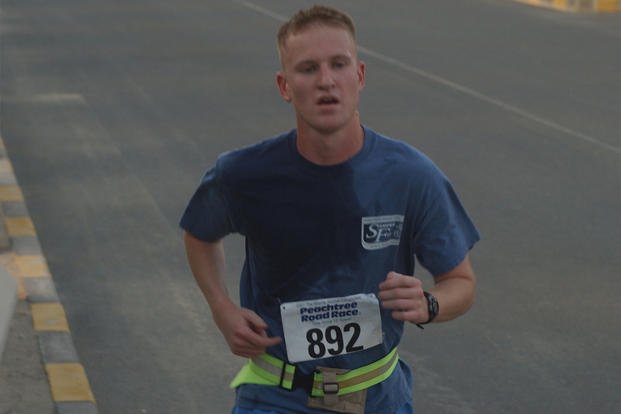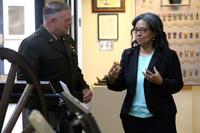Summer is the time to be outside, but there are some days (many recently) that can be dangerous to your health and cause poor performance if you neglect basic steps to avoid overheating. To avoid overheating, heat exhaustion, heatstroke or even death, follow these heat recovery steps:
1. Hydrate, hydrate, hydrate: Keep water to avoid dehydration from perspiration. In arid environments, you will not see sweat, but more than likely, you will see salt stains on your clothing and have very dry skin or chapped lips. Recommended amounts of water increase with prolonged activity, so make sure you are getting 3-4 quarts of water a day, at least. This number is not universal and depends on your size.
Typical daily water amounts in ounces can be 50% of your body weight in pounds. Therefore, a 200-pound man needs 100 ounces of water a day, especially if outdoor activity level is high.
2. Do not forget electrolytes if you are sweating for long periods of time or have salt stains. Fruits and vegetables contain salts like potassium, calcium, magnesium and sodium that will help you replace the minerals needed to keep the body functioning properly. Gatorade, coconut water and other sources of electrolytes are recommended after an hour of activity where heavy sweating is produced. Depending upon the heat, you may need them sooner, but do not forget water. Water is still important.
3. Wear white: If you are in the sun for long periods, wear clothes with reflective colors (hat, shirt, shorts) to help you stay cooler. By having on a dark-colored (or worse, black) clothing, you can increase the temperature inside the shirt by 20 degrees Fahrenheit. For a science-fair project, my son actually did a test with a white and black shirt with a pound of ground beef in a Ziploc bag using a meat thermometer. In direct sunlight, the dark shirt was anywhere between 20 degrees and 30 degrees hotter.
4. Stay cool: Half of fatigue is body heat. There are many quick ways to keep your body heat down, depending upon your situation. If you live near the water or pool, jump into it occasionally if you are working or playing outdoors. Keep your wet clothes on (if you do not mind wearing wet clothes). If you are in the military, being uncomfortable by being wet can outweigh overheating and falling out of a mission or training exercise.
5. Ice packs: If you have access to a freezer, grab some ice or cold water bottles and place it in your hands, on your neck or even armpits to help cool the blood heading from your extremities to your core. Touch your face and neck with your hands to help cool off when you have to stay dry.
6. Wet cloth: If getting entirely wet is not an option, wet a cloth with cold (ice-filled) water and place it on your head and neck throughout the day.
7. Head in the water: Your head gets hot quickly, and you likely will notice the heat coming off your head. Place your head in cold water or pour cold water on your head regularly when you can.
8. Stay in the air conditioning if you can: Some days when the temperatures are in the 100+ range with high humidity, it can be dangerously hot with poor air quality, so staying inside is an answer. If you do not have air conditioning, an old trick we used to do growing up in Florida was to place a wet towel or sheet over an open window and a box fan a few feet in front of it. It would draw in air from outside but moderately "cool" the air as it entered the house.
9. Take a shower: If you cannot jump in a pool or open water source, find a shower and make it cold. Let the water hit your head and take deep breaths as your body gets used to the cold water.
10. Get your outside work done in the morning: The coolest part of the day is right at sunrise. Though it still may be uncomfortable and warm and humid, it is likely not very hot and humid yet. So shoot for doing most work, training and sports first thing in the morning before noon.
11. Acclimate to the heat: Do not just go outside your first time when it is 100+ degrees. Make sure your activity level is normal throughout the more moderate temperatures. When it is 70-80 degrees, then reaching the 90s, make sure you are used to those temperatures as well. When you know it is going to be a scorcher in the next week, get outside the week before and become acclimated to it. Try not to use the AC in the car for some trips during the week before an above-average week of temperatures.
Stew Smith is a former Navy SEAL and fitness author certified as a Strength and Conditioning Specialist (CSCS) with the National Strength and Conditioning Association. Visit his Fitness eBook store if you're looking to start a workout program to create a healthy lifestyle. Send your fitness questions to stew@stewsmith.com.
Want to Learn More About Military Life?
Whether you're thinking of joining the military, looking for fitness and basic training tips, or keeping up with military life and benefits, Military.com has you covered. Subscribe to Military.com to have military news, updates and resources delivered directly to your inbox.



















